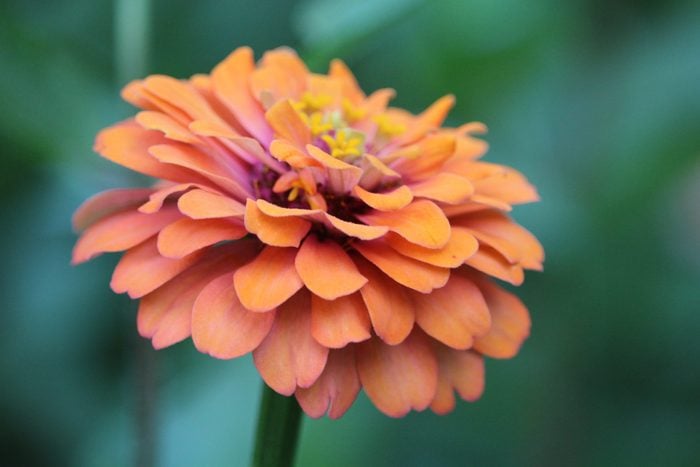
Zinnias
You can grow annual zinnias in any season when your garden is frost-free. They do best in a sunny, well-draining spot.
Zinnias are often sold in seed mixes that contain many colors, but you can find packets of seeds for just orange zinnias. To tone down the orange in your zinnias, try ‘Queeny Lime Zinnia.‘
Many zinnias grow three feet or taller, so give them room to reach full size. If that’s too big for your garden, look for smaller varieties, like the Profusion zinnias, which are only a foot tall. They do great in containers.
When zinnias are in bloom, bees and butterflies will be frequent visitors.
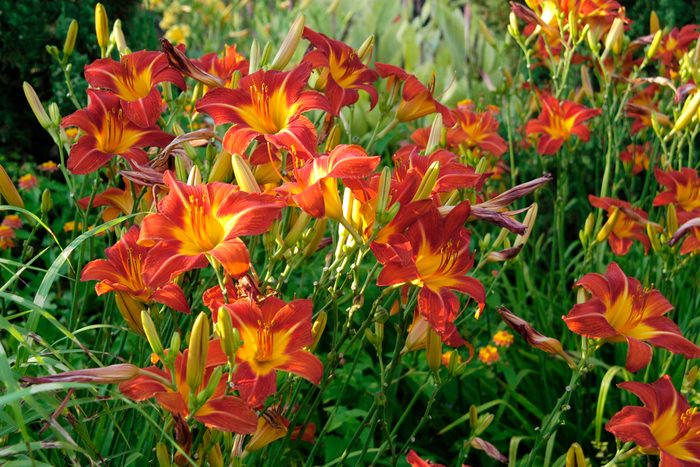
Daylilies
One of the most popular perennial flowers is the daylily. They’re found almost everywhere because they’re generally considered hardy in United States Department of Agriculture (USDA) Plant Hardiness Zones 3 through 9. They grow well in full sun with well-drained soil.
While daylily growers brag about the range of colors and forms, rest assured there are many orange varieties available. To be sure you get the orange you want, buy your daylily in bloom. You can transplant it in the garden almost any time, as long as you keep it well-watered until it’s established.
There are many orange hybrids of daylilies available so don’t settle for those orange roadside varieties, which aren’t native to the U. S. and are spread by underground runners.
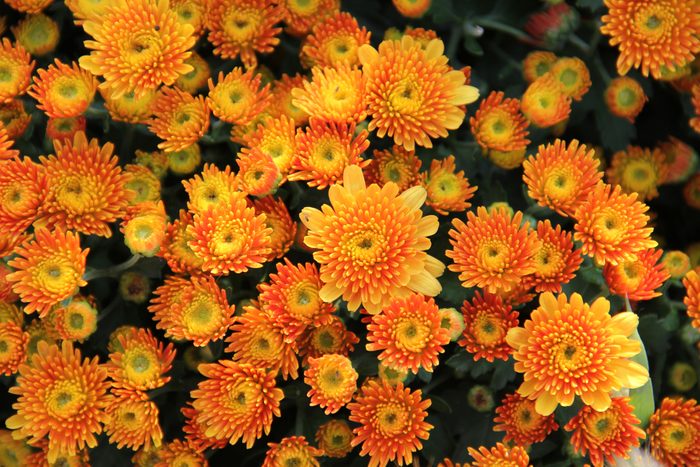
Mums
Blooming mums show up in the fall, and many gardeners mistakenly think they’re annuals. But mums are perennials in USDA Zones 5 through 9. They like well-drained, sunny locations.
If you buy a mum in the fall, buy it early, just as the color shows on the buds. Then plant it in the garden and keep it watered until it becomes established.
You could also buy your mums earlier in the year before buds emerge if you’re certain the flowers will be orange. ‘Pumpkin Igloo’ is a good choice.

Pansies and Violas
When most people think about pansies and the smaller violas, they think of purple flowers. But there are orange pansies and violas as well.
Pansies and violas prefer cooler weather. Where winters are mild, especially Zone 7 and warmer, pansies and violas often grow from fall through spring before finally succumbing to summer heat.
In Zone 6 and colder, we usually treat pansies and violas as cool season annuals. Plant them early in the spring and they’ll survive through spring frosts. Or plant them later in the fall to finish out the season.
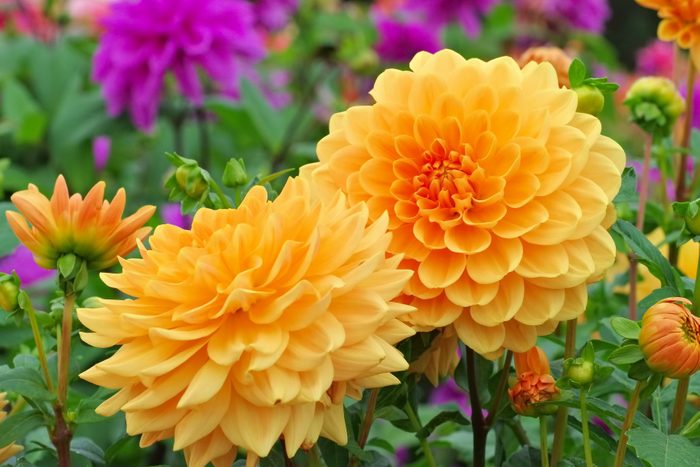
Dahlias
These are one of the most popular flowers today. Purchase varieties like ‘Orange Impact‘ as tubers and plant them in the garden in spring after the danger of frost. Or pot them up several weeks before planting them in the garden to give them a head start.
Dahlias prefer full sun to part-shade and well-drained soil. You may need stakes and weather-resistant twine to keep taller varieties from flopping over. In Zones 8 and colder, you will also need to dig up the tubers in fall after the first frost. Then you can trim off the stems and store them in a cool location before replanting them in spring.
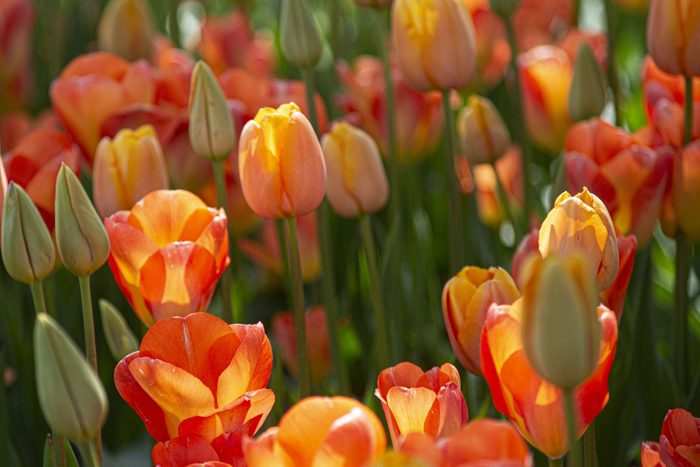
Tulips
Start the spring flower season with a pop of orange tulips. If you live in Zones 3 through 8, buy tulip bulbs to plant in the fall. They require a cold period before coming up and blooming in spring.
For best results, choose a sunny, well-drained location. Cut off the spent blooms but leave the foliage to die off naturally. While the foliage grows, it sends energy down to the roots to grow a bigger bulb for next year’s blooms.
If you forgot to plant tulips in the fall, check your local garden center in the spring. Many sell sprouted tulips in single containers, ready to plant in your garden or pop into a container for a nice spring display.
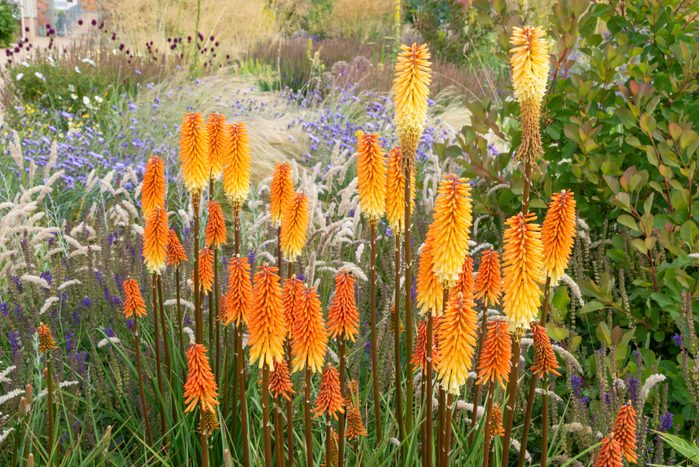
Kniphofia
Kniphofia, also known as red-hot poker or torch lily, will make a striking orange statement in your garden.. This perennial flower is generally considered hardy in Zones 6 through 10. With a good covering of mulch and a mild winter, however, it may survive in Zone 5. It does best in full sun with good drainage.
Kniphofia can be big, with foliage that grows two to three feet tall and flowers up to four feet tall. If that’s too big for your garden, look for dwarf varieties. For a lovely orange flower, consider ‘Alcazar.‘
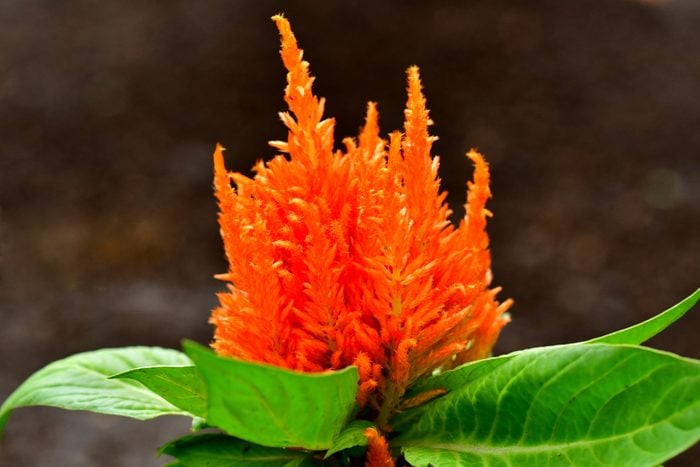
Celosia
Celosia is an annual that comes in many forms and colors, including orange. Start seeds indoors four to five weeks before your anticipated frost-free date, then plant them outside in the garden or in containers in full sun. You can also find celosia at many garden centers in spring.
‘Flamma Orange‘ is a newer, award-winning variety that grows a foot tall with orange plume-type flowers. Once you get it growing, you don’t need to deadhead it. Enjoy all that orange right up until frost in the fall.
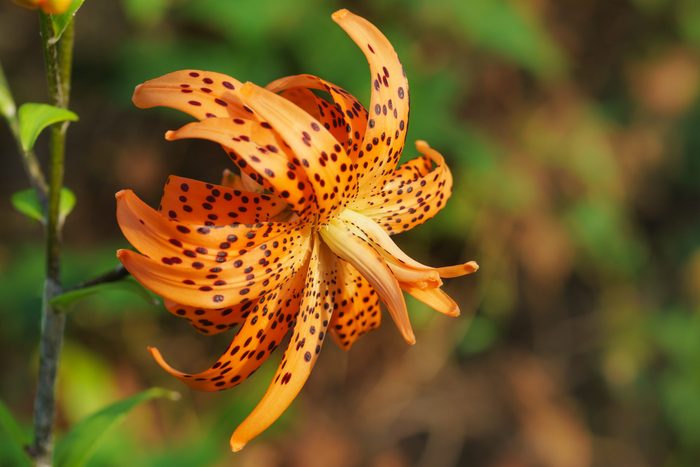
Double Tiger Lily
Many true lilies produce orange flowers, but the double tiger lily stands out. While this perennial grows up to four feet tall, it doesn’t need a lot of room sideways. That makes it ideal for squeezing it in between other flowers.
It’s hardy in Zones 3 through 8 and grows well in full sun to part-shade with good drainage. Tiger lilies usually bloom in mid to late summer. Remove the spent blooms and leave the foliage to grow until it dies back in fall. This helps the plant grow a big bulb for next year’s flowers.
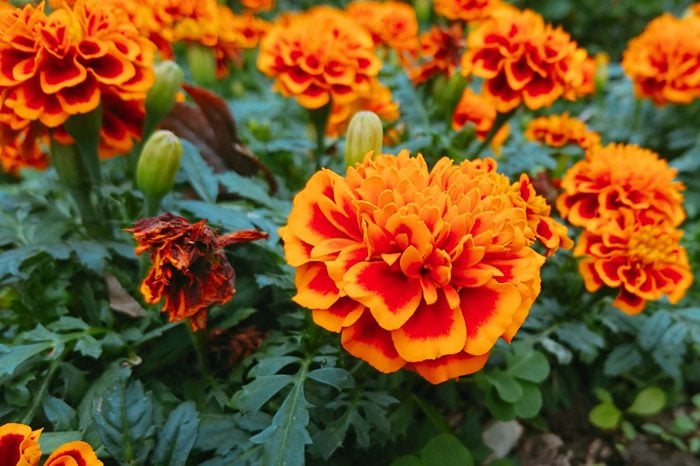
Marigolds
Marigolds are great for a quick pop of orange on an easy-to-grow annual flower. You can sow marigold seeds directly in the garden. Start a few seeds in a tray indoors and transplant them after your garden is frost-free, or buy plants at a local garden center.
Although they won’t be the first flower to bloom, you should have flowers all the way until frost. To encourage marigolds to keep flowering, pinch off spent blooms.
There are many varieties with orange flowers, including a dwarf variety of African marigolds in the Discovery series. If you want a taller marigold, try ‘Elevate Orange,‘ which grows three feet and higher.
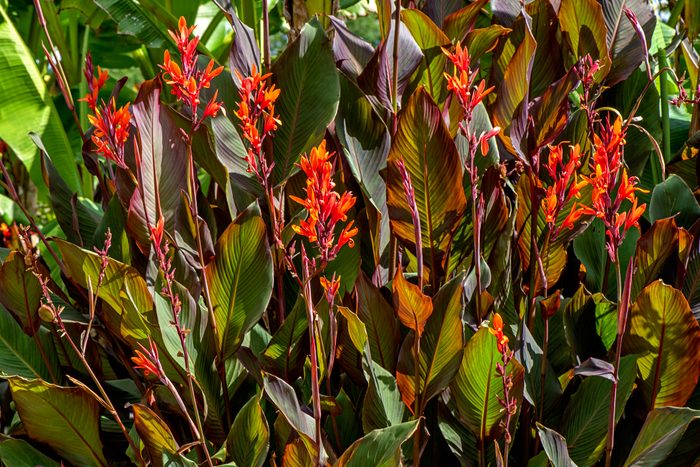
Canna Lily
For a tropical-looking orange flower, consider canna lilies. Many also have striking foliage, including ‘Pretoria,’ so much so you almost don’t see the orange flowers! These often grow three to four feet tall or taller.
Buy bulbs and plant them in the garden in full sun or grow them in a large container. They’re tropical plants, so if you want to overwinter your canna, you’ll need to move the container indoors or dig up and store the bulbs someplace dry.
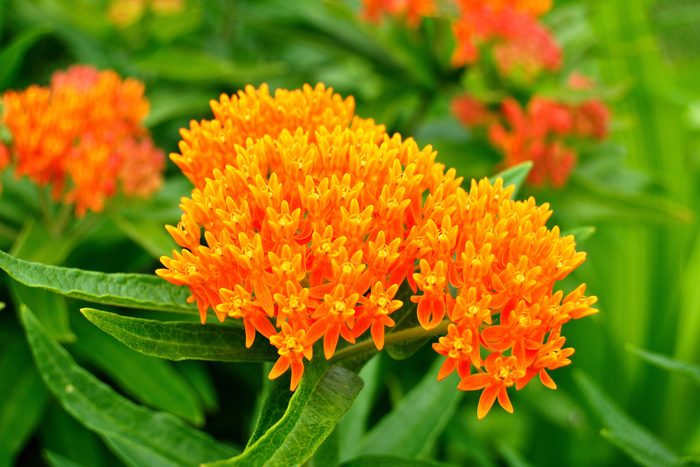
Butterfly Weed
You may have read about the declining populations of monarch butterflies and why planting butterfly weed can help. Monarchs often lay their eggs on butterfly weed, which is also a source of nectar. On top of all that, the flowers are a beautiful orange.
Grow this perennial flower from seed or starter plants. The seed requires a cold period of three months before it will germinate.
Butterfly weed does well in a variety of soil conditions, full sun and part-shade. It’s hardy in Zones 3 through 9. It doesn’t like to be moved because it has a tap root. Once you’ve found a good spot for it, plan for it to grow and flower there for years to come.
